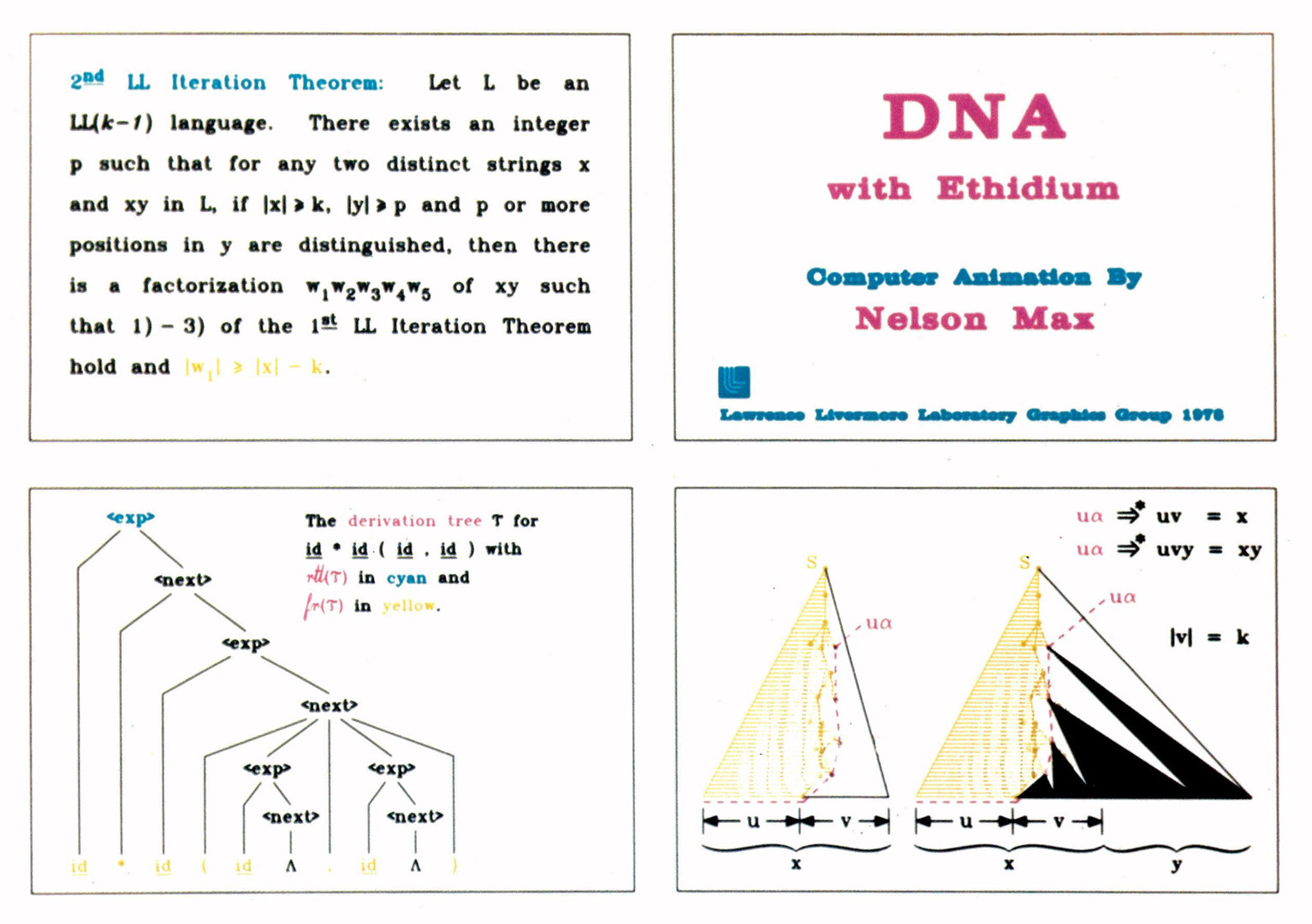“An interactive documentation system” by Beatty, Chin and Moll
Conference:
Type(s):
Title:
- An interactive documentation system
Presenter(s)/Author(s):
Abstract:
Most chronic users of time sharing computer systems are familiar with programs that allow the creation and manipulation of text files. Less often they have at their disposal programs that will format the document described by a text file, generating output such as a typist might produce. Rarely is there any mechanism by which graphics can be integrated with text. Lawrence Livermore Laboratory has a powerful, flexible and interactive computer-based documentation system that will format a source document description according to user specifications and incorporate illustrations to produce online documents, offset reproduction masters, 35mm color slides, movie titles, or viewgraphs. The flexibility of the system is greatly enhanced by the use of a device independent graphics library. Text may be plotted using the hardware characters specific to a device (when possible), or may be drawn as Hershey characters or polygonally outlined symbols. Illustrations may be defined in a simple 2d graphics language, and graphical output from application programs may also be incorporated directly into a document.
References:
1. B. W. Kernighan and L. L. Cherry, “A System for Typesetting Mathematics,” Comm. ACM 18, 151-156, (1975).
2. H. Moll, TRIX – An Interactive, Interpretive Language for Manipulating Strings of Characters, Lawrence Livermore Laboratory, Livermore, CA, UCID-30100 (1974).
3. A. Cecil, TRIX AC: A Set of General-Purpose Text Editing Commands, Lawrence Livermore Laboratory, Livermore, CA, UCID-30040 (1974).
4. H. Moll, The TRIX Report Editor, Lawrence Livermore Laboratory, Livermore, CA, UCID-30142 (1978).
5. J. C. Beatty, PICTURE – A Picture-Drawing Language for the TRIX/RED Report Editor, Lawrence Livermore Laboratory, Livermore, CA, UCID-30156 (1977).
6. M. Blair, The UXDD80 Graphics System, Lawrence Livermore Laboratory, Livermore, CA, UCID-30146 (1977).
7. N. Storch, TV80: Device-Independent Graphics Routines for the CDC 7600 Computer, Lawrence Livermore Laboratory, Livermore, CA, LTSS 305 (1978).
8. J. C. Beatty, REDPP – A Postprocessor for the TRIX/RED Editor, Lawrence Livermore Laboratory, Livermore, CA, UCID-30125 (1977).
9. C. Schneider, D. Thompson, and G. Whitten, User’s Guide to the Octopus Computer System (The SHOC Manual), Lawrence Livermore Laboratory, Livermore, CA, UCID-30048 (1975).
10. C. N. Mooers, “TRAC, a Procedure Describing Language for the Reactive Typewriter,” Comm. ACM 9, 215-219 (1966).
11. R. E. Griswold, J. F. Poage, and I. P. Polonsky, The SNOBOL4 Language, 2nd ed., Prentice-Hall, Englewood Cliffs, NJ (1971).
12. D. E. Nielsen , Jr., Three Dimensional Electromagnetic Particle Simulation of Fusion Plasmas, Ph.D. Thesis, Stanford University, Stanford, CA (to be published).
13. A. V. Aho and J. D. Ullman, Principles of Compiler Design, Addison-Wesley Publishing Company, Reading, MA, pp. 219-224 (1977).
14. A. V. Hershey, Computer Graphics and Image Processing, 1, 373-385 (1972).
15. N. M. Wolcott and J. Hilsenrath, Tables of Coordinates for Hershey’s Repertory of Occidental Type Fonts and Graphics Symbols, NBS Special Publication 424, U. S. Government Printing Office (1976).
16. J. C. Beatty, “Two Iteration Theorems for the LL(k) Languages”, Dept. of Computer Science, University of Waterloo, Technical Report CS-78-24. To appear in Theoretical Computer Science.
17. K. S. Booth and G. S. Leuker, “Testing for the Consecutive Ones Property, Interval Graphs, and Graph Planarity using PQ Tree Algorithms,” JCSS 13 (1976) 335-379.
18. R. W. Kuhn, Development and Implementation of New Character Fonts at LLL, Lawrence Livermore Laboratory, Livermore, CA, UCID-17653 (1977).




